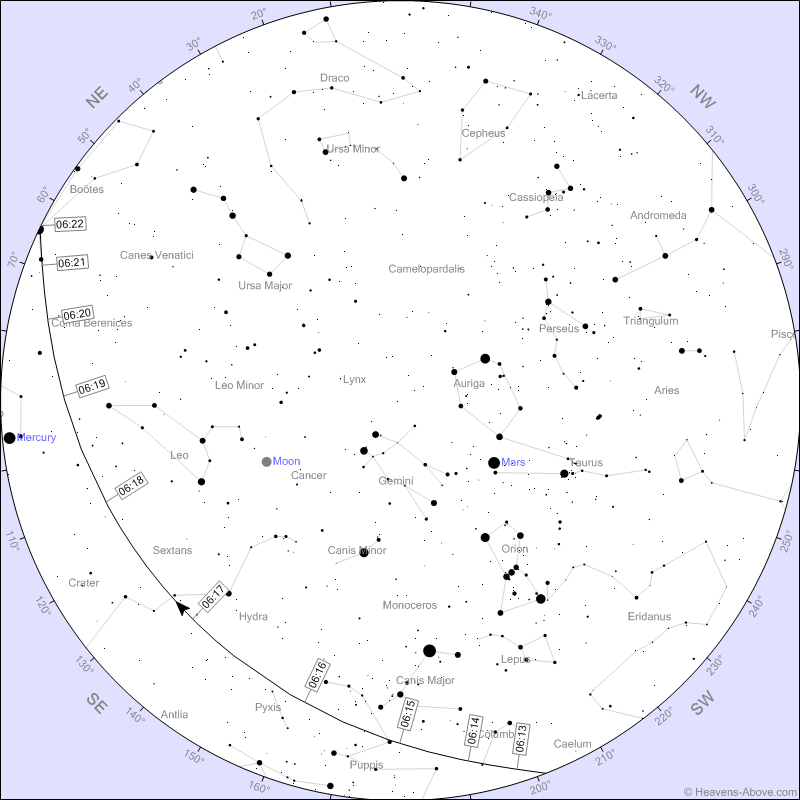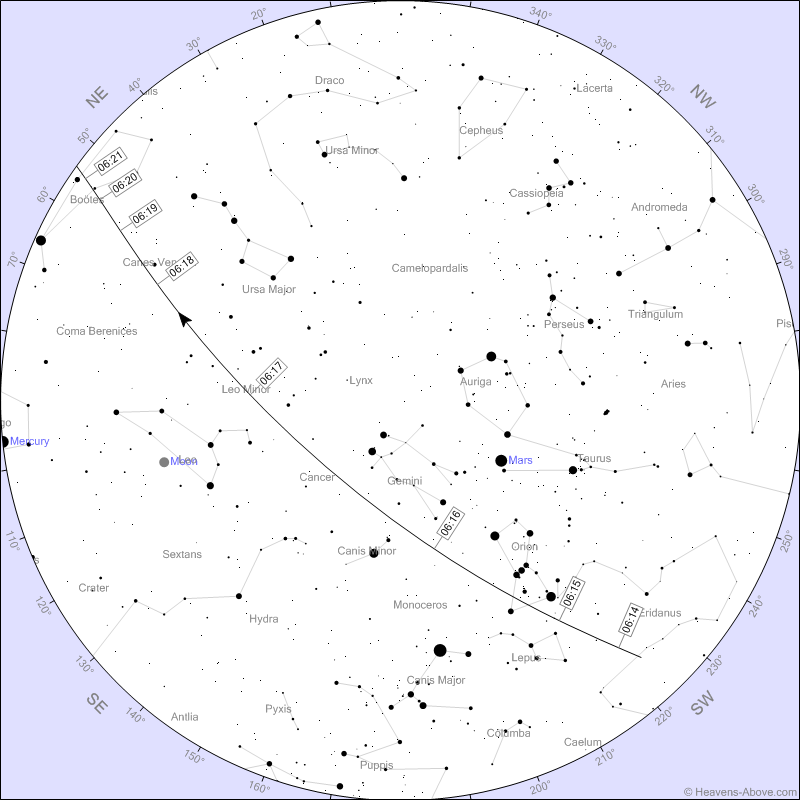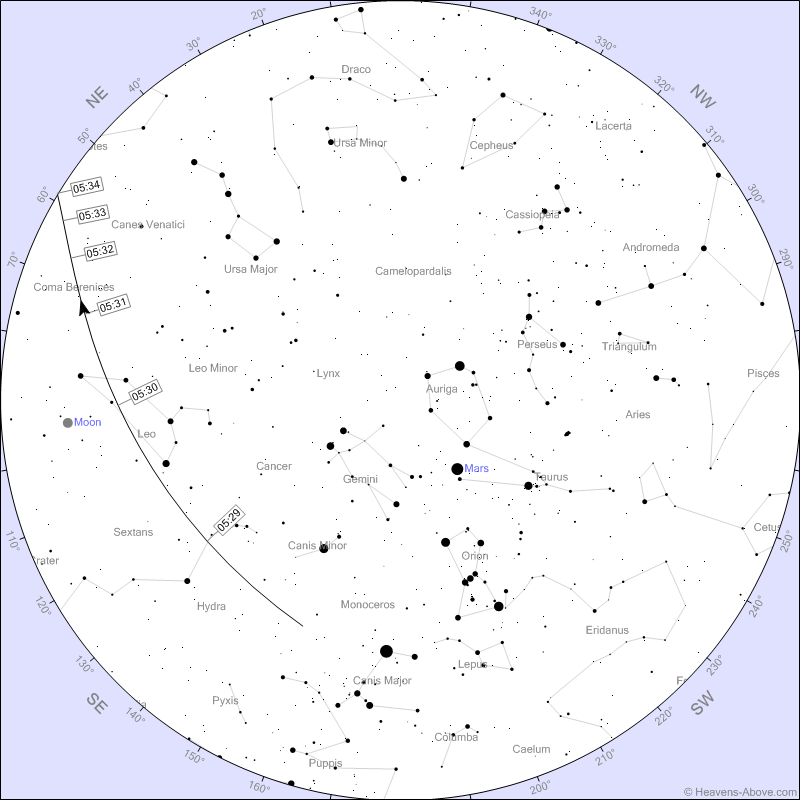The International Space Station (ISS) is making several bright passes over the Delaware Valley in the pre-dawn skies throughout the week of October 16. Below we highlight the four best opportunities to #SpotTheStation this week.
The space station orbits Earth at an average altitude of 248 miles and circles the globe every 90 minutes. It is visible from 95% of the inhabited land on Earth but is not visible from extreme northern or southern latitudes.
October 19 - 6:13 am
The quartet of passes starts on Wednesday morning, October 19. The ISS will rise in the South-Southwest at about 6:13 am, passing low to the East-Northeast before setting at 6:23 am. Look for it as it passes below the brightest star, Sirius, in the constellation Canis Major, the Big Dog. By 6:18, it will be passing below Leo, the Lion. If you're lucky and have a clear view of the horizon, you may also spot Mercury as it rises in the East 30 minutes before dawn.
At its brightest, the station will appear as bright as Sirius. Brightness is measured on a reverse logarithmic scale. The brighter the object is, the lower its magnitude number. For example, the Sun is magnitude -27, the full moon is -13, and Mercury's average brightness is 0.23. The average naked eye limit is magnitude 6.5.

Details:
| Event | Time | Brightness |
| Rises | 06:12:58 | -0.2 |
| Maximum Altitude | 06:17:59 | -1.3 |
| Sets | 06:23:02 | 1.2 |
October 21 - 6:15 am
The best of the passes will begin at 6:15 am on Friday, October 21. The ISS will rise in the Southwest at 6:15 am, passing high overhead before setting at 6:23 am. Look for it as it passes through Orion, the Hunter, just below the bright star, Rigel.
At its brightest, the station will be brighter than Jupiter.

Details:
| Event | Time | Brightness |
| Rises | 06:14:27 | -1.5 |
| Maximum Altitude | 06:17:35 | -3.5 |
| Sets | 06:23:01 | 0.9 |
October 22 - 6:15 am
Head out again the next morning for another bright pass at 5:30 am on Saturday, October 22. The ISS will appear in the southern sky below Procyon in Canis Minor, the Little Dog. Watch as it passes between the Moon and the sickle of Leo, the Lion before setting in the East-Northeast at 5:34.
At its brightest, the station will be brighter than Jupiter.

Details:
| Event | Time | Brightness |
| Rises | 05:28:20 | -2.6 |
| Maximum Altitude | 05:28:46 | -2.5 |
| Sets | 05:34:03 | 1.1 |
October 23 - 6:15 am
The last of the passes will begin at 6:14 am on Sunday, October 23. The ISS will emerge from Earth's shadow in the West passing low in the North before setting at 6:21 am. Look for it as it passes near Cassiopeia, the Queen around 6:16 am.
At its brightest, the station will be brighter than Jupiter.

Details:
| Event | Time | Brightness |
| Rises | 06:14:39 | -2.7 |
| Maximum Altitude | 06:16:13 | -3.3 |
| Sets | 06:21:36 | 0.7 |